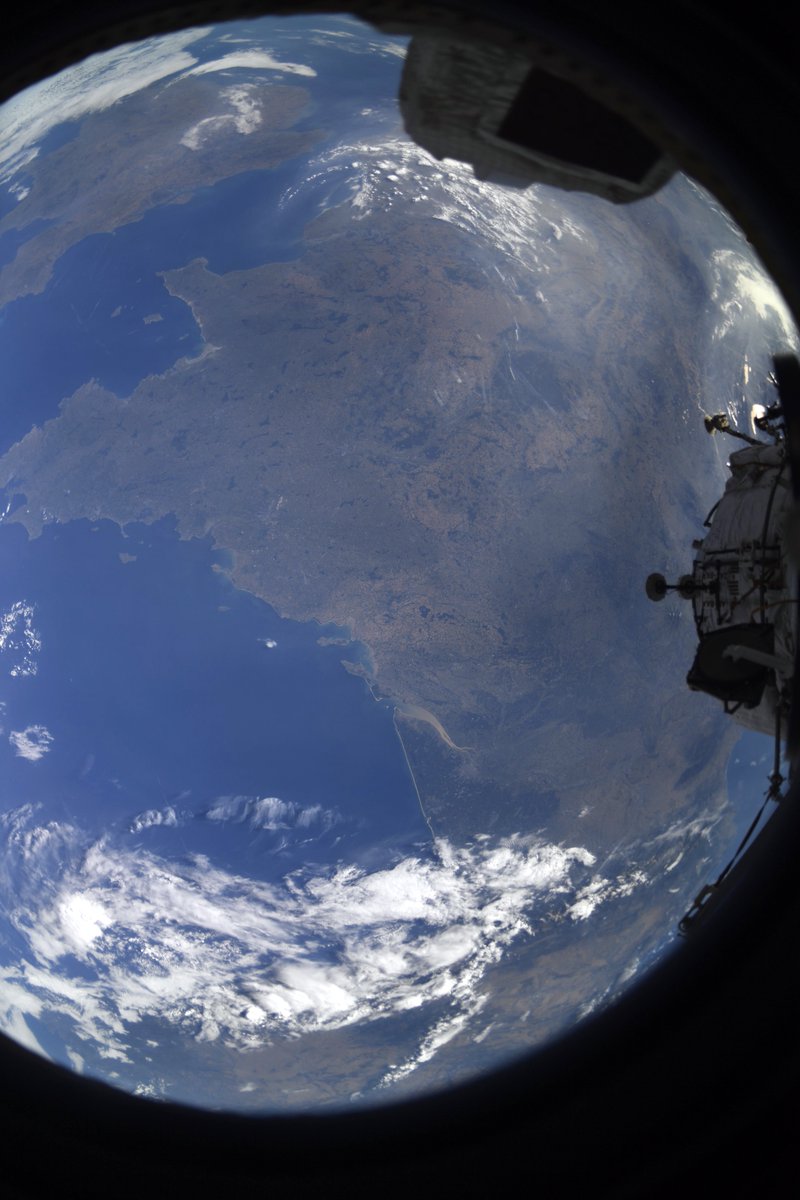[:ja]Congratulations for France to win the 2018 Soccer World Cup!
オレグ・アルテミエフ宇宙飛行士がISSから撮影したフランスです。画像下方に写っている直線的な海岸線付近のランド・ド・ガスコーニュ自然公園が目立ちます。

ランド・ド・ガスコーニュ自然公園は、フランス南西部アキテーヌ地域圏の湿地帯およびマツ林で、ほとんどがカイガンショウという海岸マツです。現在ランドの森を占める大部分は19世紀まで羊飼いが暮らす湿地でしたが、村々を脅かす海岸砂丘の伸張を食い止める目的で植林が進みました。樹脂生産から製紙業へ産業も転換され、今日に至ります。
地上の様子はこちらです。

参考文献: Oleg Artemyev’s Tweet
ウェブ地球儀で地球俯瞰画像を見る: LiVEARTH
[Earthview Wonders] No.556: Landes de Gascogne Regional Natural Park, France🇫🇷
Congratulations for France to win the 2018 Soccer World Cup!
Astronaut Oleg Artemyev captured from ISS France. At the lower side of the image lies straight coastline with Landes de Gascogne Regional Natural Park.

Landes de Gascogne Regional Natural Park is a protected area of pine forest, wetland and oceanic coastline located in the Nouvelle-Aquitaine region of southwestern France. The roughly triangular area of the modern-day park was originally an inland sea which had receded, leaving a mostly infertile depression which did not attract human habitation. Largescale public works helped drain, clear, and reforest the area during the nineteenth century but the transformation was limited. By the mid-twentieth century, government attention had turned to protecting the natural environment.
The local scenery on the ground is as follows.

Reference: Oleg Artemyev’s Tweet
See earthview photo gallery with web-globe: LiVEARTH[:en][Earthview Wonders] No.556: Landes de Gascogne Regional Natural Park, France🇫🇷
Congratulations for France to win the 2018 Soccer World Cup!
Astronaut Oleg Artemyev captured from ISS France. At the lower side of the image lies straight coastline with Landes de Gascogne Regional Natural Park.

Landes de Gascogne Regional Natural Park is a protected area of pine forest, wetland and oceanic coastline located in the Nouvelle-Aquitaine region of southwestern France. The roughly triangular area of the modern-day park was originally an inland sea which had receded, leaving a mostly infertile depression which did not attract human habitation. Largescale public works helped drain, clear, and reforest the area during the nineteenth century but the transformation was limited. By the mid-twentieth century, government attention had turned to protecting the natural environment.
The local scenery on the ground is as follows.

Reference: Oleg Artemyev’s Tweet
See earthview photo gallery with web-globe: LiVEARTH[:]